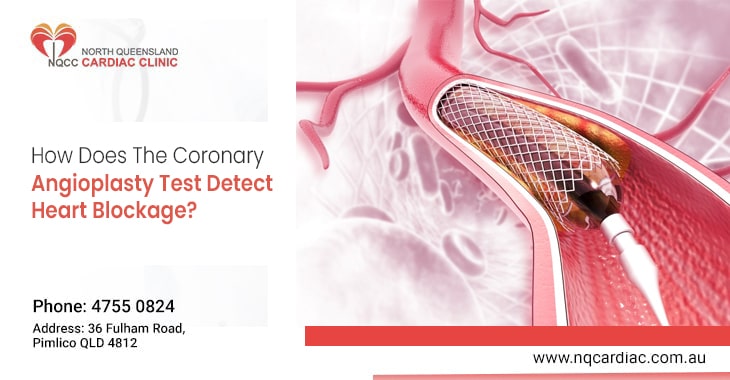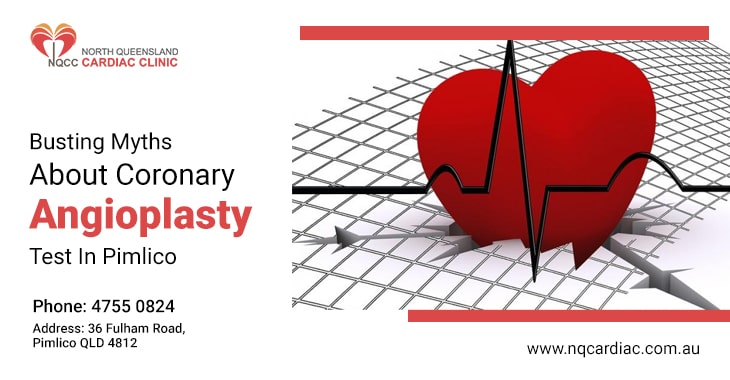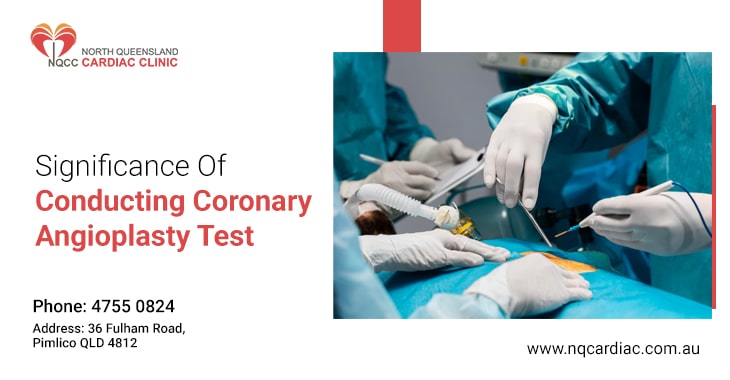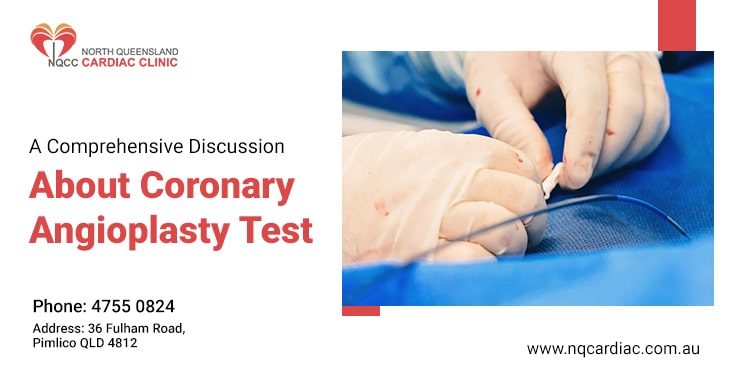The human heart is a remarkable organ, tirelessly pumping blood throughout our bodies to keep us alive. However, over time, our lifestyle choices, genetics, and other factors can lead to the development of heart blockages or coronary artery disease. Detecting these blockages early is crucial for preventing heart attacks and ensuring a healthy heart. One of the most used diagnostic tools for identifying heart blockages is the Coronary Angioplasty Test. North Queensland Cardiac Clinic, renowned Coronary Angioplasty Test Clinic Pimlico, led by renowned cardiologists Dr Dharmesh Anand and Dr Raibhan Yadav, discusses how this test works to detect heart blockages through this blog.
- The Role of Coronary Angioplasty
- Detecting Heart Blockages
The Role of Coronary Angioplasty:
Coronary Angioplasty, also known as Percutaneous Coronary Intervention (PCI), is a diagnostic and therapeutic procedure used to treat coronary artery disease. However, in the context of detection, the primary focus is on the diagnostic aspects of the procedure.
Here’s how it works:-
Preparation:
The patient is prepared for the procedure in a specialized cardiac catheterization laboratory. This typically involves administering a local anesthetic to numb the catheter’s insertion area, usually in the groin or wrist.
Catheter Insertion:
A thin, flexible catheter tube is carefully inserted into an artery. It is guided through the circulatory system until it reaches the coronary arteries near the heart.
Contrast Dye Injection:
A contrast dye is injected through the catheter directly into the coronary arteries. This dye is visible on X-rays and helps visualize the blood flow within the coronary arteries.
X-ray Imaging:
X-ray images are taken in real time as the contrast dye flows through the coronary arteries. These images show the coronary arteries’ structure and any abnormalities, such as blockages or narrowing.
Detecting Heart Blockages:
Here’s how the key X-ray images reveal the presence and severity of blockages:-
Normal Arteries:
When coronary arteries are healthy and free from significant blockages, the X-ray images show a smooth, continuous flow of contrast dye through the arteries. The dye reaches all areas of the heart muscle without any interruptions.
Blockages:
If there are blockages in the coronary arteries, they will be visible on the X-ray images. These blockages appear as areas where the contrast dye cannot flow freely. The severity of the blockage can also be assessed by measuring the degree of narrowing or obstruction in the artery.
Location and Extent:
The X-ray images obtained during the Coronary Angioplasty Test provide precise information about the location and extent of blockages. This information is crucial for treatment planning and determining whether the patient may benefit from procedures like angioplasty or stent placement.
Bottom Line
The Coronary Angioplasty Test is a vital diagnostic tool in cardiology, allowing healthcare providers to accurately detect and assess heart blockages or coronary artery disease. At North Queensland Cardiac Clinic, Coronary Angioplasty Test Clinic Pimlico, under the expert guidance of Dr Dharmesh Anand and Dr Raibhan Yadav, patients can benefit from the latest advancements in cardiac care, including this crucial diagnostic procedure.
Early detection of heart blockages through the Coronary Angioplasty Test is essential for timely intervention and the prevention of heart attacks. If you or a loved one suspect heart issues or have risk factors for coronary artery disease, don’t hesitate to consult with our experienced team of cardiologists. Your heart health is our top priority, and we are committed to providing the best care possible.





Recent Comments